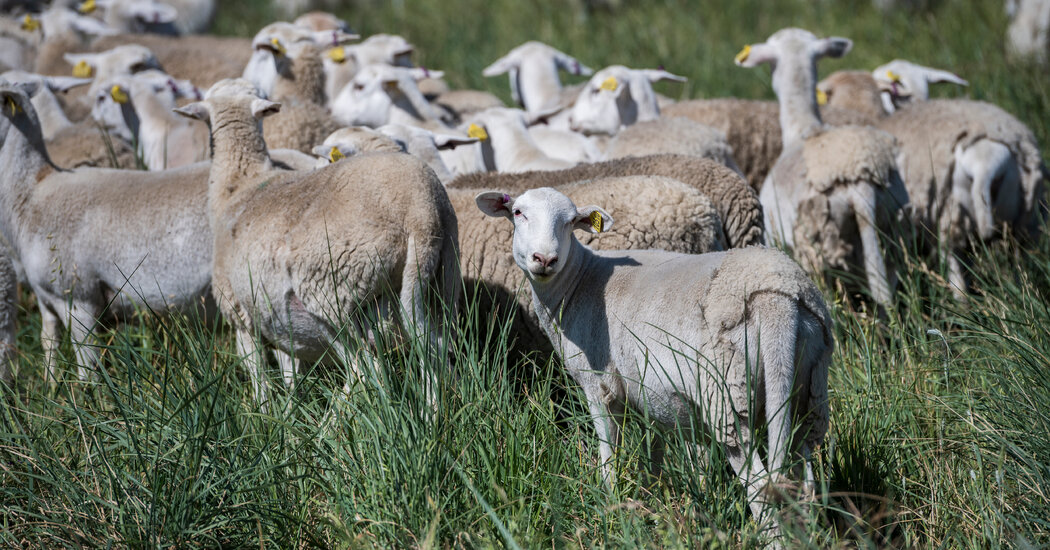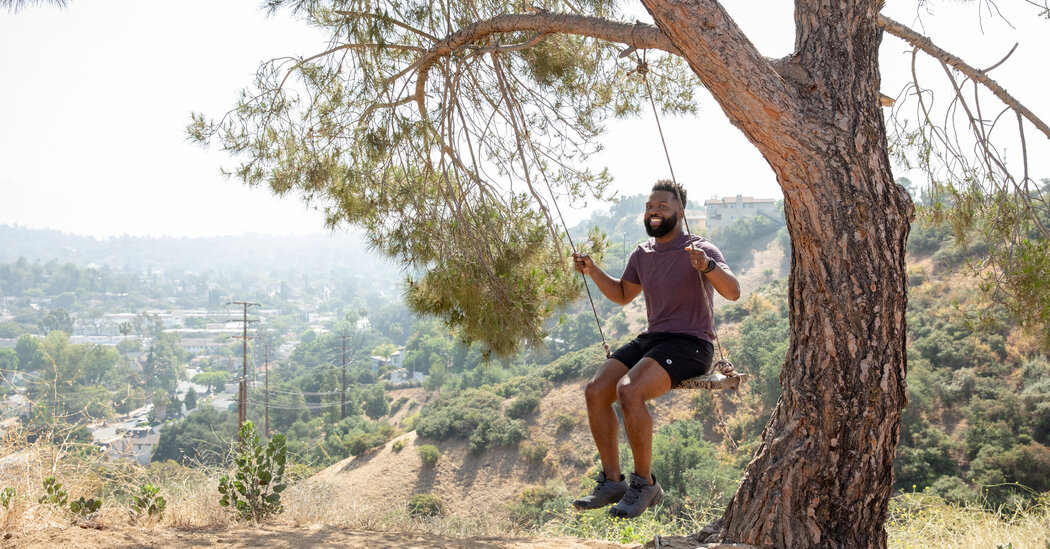
PAICINES, Calif. — This is a story about livestock and vegetation, microorganisms and tilling, ecosystems and compost, water and climate change, which, in 2022, means it’s very much about wine.
This dusty town in San Benito County, about an hour by car southeast of Santa Cruz, is the site of Paicines Ranch, an experiment in creating a diverse ecosystem dedicated to regenerative agriculture and soil health.
On 7,600 rolling acres of grassy hills, threaded with chaparral sage, oak forest and wetlands, cattle, sheep, pigs, turkeys and chickens graze and forage in an environment rich with the sounds of birds, insects and other wild creatures going about their day.
Before the animals are sold off as pastured meats, they are integral parts of a polycultural farm, which includes roughly 300 acres of organic grains and vegetables along with a 25-acre organic demonstration vineyard.
The vineyard has a tall order. It was specifically intended to build soil health with a permanent cover of native perennial grasses and other plants, and to introduce animals into the vineyard. The aim is to withstand and combat climate change by sequestering carbon and minimizing water usage, and to increase the population of mycorrhizal fungi, which form symbiotic relationships with the vine roots, all while producing the material to make exceptional wine.
Other vineyards are farmed with regenerative agriculture, which builds a thriving population of microorganisms in the soil and a diverse ecosystem. An increasing number of grape growers have stopping tilling their vineyards, which exposes bare earth, releasing carbon dioxide into the atmosphere. Many even bring animals into the vineyard after the grapes have been harvested and before the new season starts, using them to control grasses and weeds and as a natural source of fertilizer.
Yet few have taken the approach of Paicines Ranch (pronounced pie-SEEN-ess), which allows sheep into the vineyard even during the growing season, a practice that is generally shunned because sheep can eat precious leaves, buds and grapes.
A few others have developed workarounds to discourage sheep from going after the vines, but the Paicines vineyards may be the first in modern times to have been designed with the idea of having animals among the vines.
Instead of the usual method of training vines on trellises rather low to the ground, in easy reach of hungry grazers, the Paicines vines are set much higher, beyond the reach of even the most determined sheep. This goes against conventional modern thinking, in which vines are kept low both to absorb heat from the earth and to minimize the energy the plant uses pushing sap upward.
“What is the evolutionary aspect of a grapevine?” said Kelly Mulville, the vineyard manager. “They go up a tree.”
Mr. Mulville has been working for years with the notion of integrating animals and organic farming, ever since noticing how much better the crops did when planted in areas that had recently been grazed by cattle while working at an organic farm in the San Luis Valley in Colorado.
He kept that in mind as his focus transitioned to wine, which led him to Spain, Australia, New Zealand and California, where he worked at Rhys Vineyards in the Santa Cruz Mountains and Medlock Ames in the Alexander Valley. Finally, he was able to experiment with keeping sheep in a small vineyard in the Alexander Valley during the growing season and was astonished at the results.
“It was a big surprise,” he said. “We had a 98.6 percent reduction in irrigation use, and yield was way up.”
An increasing number of growers now believe that healthier soil creates the potential for better grapes and wine. But few have added animals to the equation during the growing season.
“Things happen when an animal grazes a plant,” Mr. Mulville said. “It stimulates the plant and imparts some kind of resistance to disease and pests.”
It happened that Sallie Calhoun, who owns Paicines Ranch with her husband, Matt Christiano, had been intrigued with the idea of incorporating a vineyard into the ranch’s polyculture.
Ms. Calhoun was a software engineer with an interest in organic gardening who sold her company in 2001 and purchased the ranch that same year. What constitutes the ranch today had once been part of the territory of the Amah Mutsun Tribal Band before Spanish missionaries in the late 17th century took the land. It later became part of a vast Mexican land grant before California was absorbed into the United States.
The land was eventually sold to developers in 1989, and then to Ms. Calhoun and Mr. Christiano, Ms. Calhoun said, after San Benito County decided it didn’t want a development in this sparsely populated area.
Wine grapes have a history in the region. Almaden, the big wine company, long had a 2,000-acre vineyard in Paicines, which may be why Paicines is an official appellation. The 25-acre Paicines vineyard site, Ms. Calhoun said, was a conventionally farmed vineyard from 1965 to 1995, though it had been grazed by cattle from then until planning began for the new vineyard in 2014.
The first half of the vineyard was planted in 2017 and the rest in 2020. Altogether now, it comprises seven acres of grenache and a wide variety of other grapes, including assyrtiko, verdejo, picpoul blanc, carignan, mencía, cinsault, counoise and cabernet sauvignon.
If all goes according to plan, the sheep — 1,700 live on the ranch, primarily Dorper and Katahdin breeds — will graze in the vineyard three or four times over the course of the year, eating the grasses and weeds that many growers try to eradicate because they see them as competing with the vines for resources. Mr. Mulville scoffs at the idea that other plants threaten vines.
“That’s not how ecosystems work,” Mr. Mulville said. What we call weeds have an important role to play, he said, adding to the ecological diversity while drawing in animals who feed on them and improve the life in the soil and health of the vines with their presence.
“Much of what we base our thinking on is that we’re working on a declining level of productivity because so many conventional practices reduce biodiversity,” he said. “Each plant will probably encourage a different collection of soil biology and increase the productivity of an ecosystem.
“I wanted to prove to myself we could restore ecosystems with agriculture instead of reducing them.”
The first commercial harvest was in 2021. It was sold to Margins Wine, which uses organically grown grapes chosen from what the winemaker, Megan Bell, considers underrepresented regions. She made three wines from Paicines grapes, a grenache, a verdejo and an assyrtiko.
The early results are encouraging. I tasted an assyrtiko and a verdejo during a visit to Paicines earlier this year and found both to be fresh, energetic and deeply textured. The assyrtiko in particular was striking, reminiscent of the stony citrus and herbal flavors of a wine from Santorini but kissed by a little California sun.
“The quality of the fruit was stunning,” Ms. Bell said by email. “I was incredibly impressed by the complexity the finished wines achieved from vines that were only four years old.”
Wine quality is crucial if only to draw attention to Mr. Mulville’s farming methods. People who might not be moved by moral arguments for regenerative farming may be swayed by demonstrably excellent wines.
“Ideally, the wines are extraordinary, the proof that this works,” said Mimi Casteel, a farmer and winemaker in the Willamette Valley of Oregon who has been a leading advocate for regenerative agriculture, and who has been closely following the work at Paicines.
Because wine is so often a product that heightens people’s awareness of agriculture, it can stimulate interest in the possibilities of regenerative agriculture as a tool to fight climate change and build more diverse ecosystems.
In that sense, wine is simply a tool to reach the greater goals of Ms. Calhoun and Mr. Mulville, which, as Ms. Calhoun said, is to demonstrate the benefits of soil health in hopes that their methods will be adopted widely.
“It’s not as if the first try is going to succeed,” she said. “We have to figure it out.”
Mr. Mulville added: “It was established in part to demonstrate what is possible. We’re just scratching the surface.”
Education is an important part of the Paicines program. Four paid interns are working the growing season this year, some with no previous vineyard experience.
“I really love the dedication to bringing people along and really trying to thoughtfully inoculate a generation of people who are going out to work,” Ms. Casteel said. “They are getting such a gift, working there and really, deeply thinking about that system and about how they want to work in the future.”
The Paicines model may not be for every vineyard. While Ms. Casteel admires Mr. Mulville’s work with the vineyard, and Ms. Calhoun’s vision for the entire Paicines project, she cautioned that what works in one vineyard is not necessarily transferable to another. Methods for regenerative agriculture, she believes, must be applied individually to the particular conditions of every site and region.
“I don’t want people to rip out vineyards to adapt to something trendy,” Ms. Casteel said. “There’s an inspiration there for adapting creatively rather than completely starting over. If people are inspired to have a little more habitat or do something better with the grapes, that’s a great outcome.”




